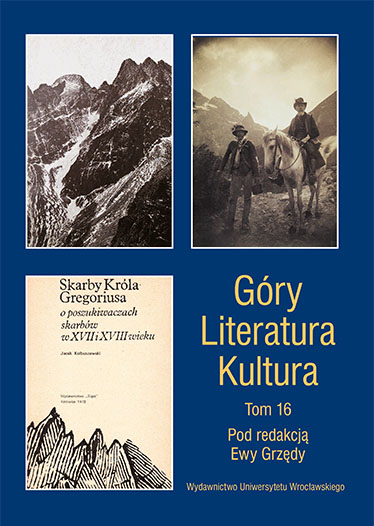

Articles

The article is devoted to analysis of the images of inhabitants and visitors of the Eastern Carpathians, appearing in the literary works that belonged to the interwar Polish literature with contemporary themes, but remained at a distance from the dominant Polish discourse of the epoch. The starting point of the article is a recognition that the specific literary representations of highlanders (inhabitants of the region) and Poles (usually guests in the region) played an important role in Polish literature, co-creating the dominant discourse of the Second Republic. They included two types of images. First, of the Hutsul Region as an exceptional place on the historical plane for the Poles and of the Hutsuls as their allies in the struggle for Polish independence. Second, of the Hutsul Region as a space for the civilising mission of the Poles and the Hutsuls as their unequal partners and, at the same time, grateful co-citizens. However, both groups of images were not the only representations of people of the Eastern Carpathians created in interwar Polish literature. Works more or less distancing themselves from the dominant discourse of the Second Republic brought other images as well. These were portraits of the Hutsuls who were individualised, empowered, and not reduced to a role played in relation to Poland and the Poles; images of the Hutsuls who were de-aestheticised, provocatively contradicting the interwar or even the 19th-century literary tradition; and fi nally, visions of the mountain people of a different national/ethnic affiliation than the Poles and the Hutsuls, especially non-stereotypical visions of Jews. The article brings analysis of literary works of authors
such as Stefan A. Borsukiewicz, Jerzy Liebert, and Antoni Gronowicz.